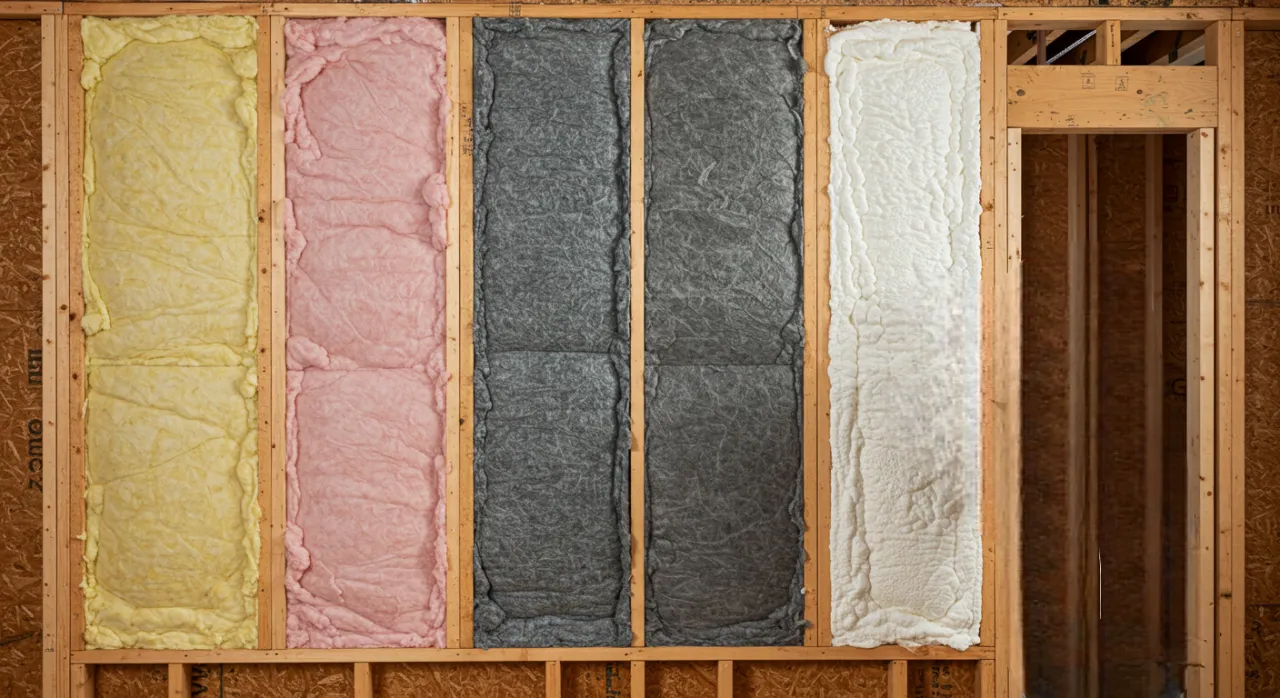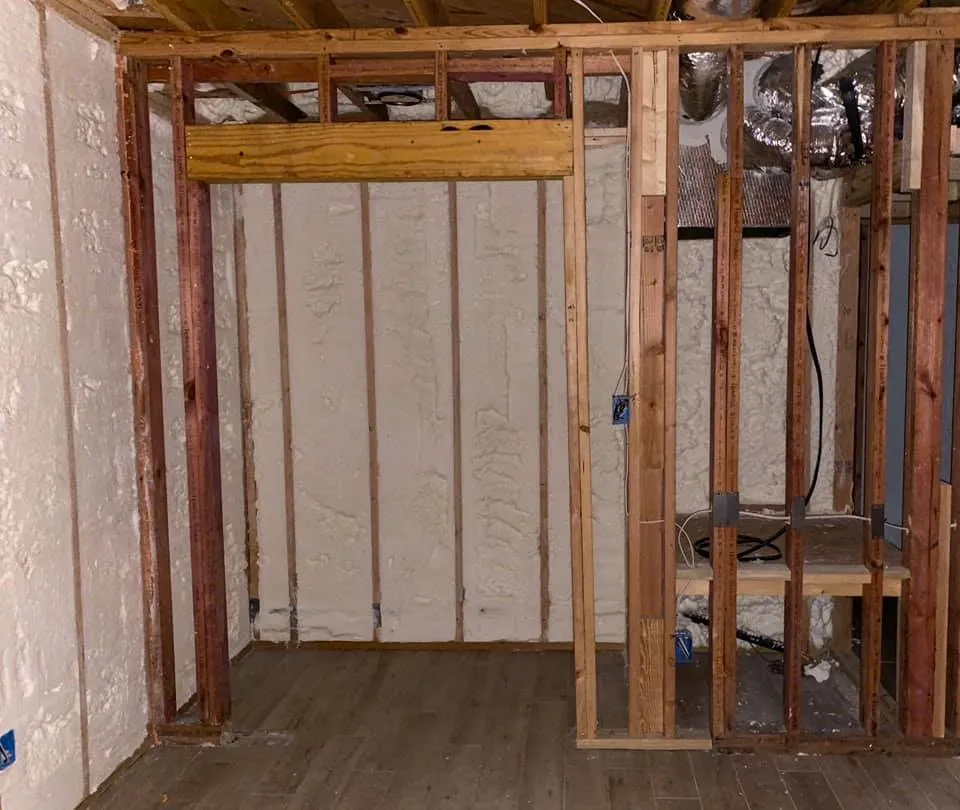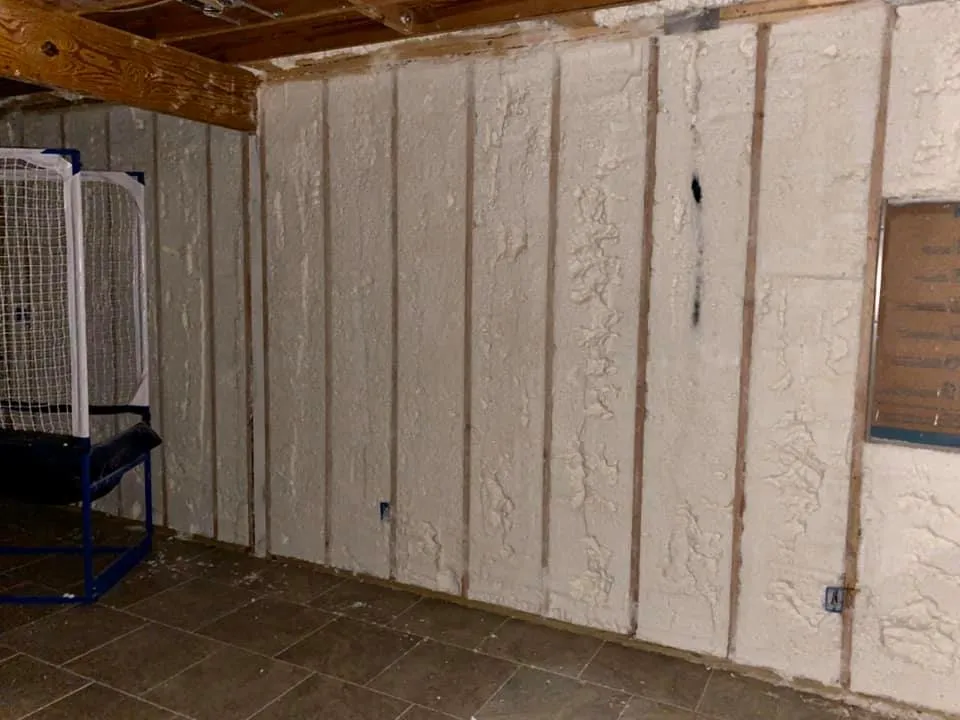Stellrr is currently NOT offering Sound Attenuation services, but feel free to learn all you want.
What was one of the biggest mistakes I made when my house was built in 2011 through Meritage Homes in Austin, TX? It was on the lack of soundproofing on interior walls. I didn’t add any sound barrier insulation.
Now we have two munchkins running around screaming. I feel like my walls are paper thin. This makes working from my home office challenging and frustrating. As I write this I am currently listening to Sterling crying in the kitchen about his night time snack.
If I could go back in time, I would have had open cell spray foam installed in every interior wall. We have spray foam in all of my exterior walls and attic for a sealed envelope which I love. This does make our house very quiet, from exterior noise which is great!
To soundproof my house with drywall installed, I have to drill little holes between every stud. Then I fill it with blown fiberglass insulation. This is not the best solution. But, it is better than removing the sheetrock to spray foam it safely.
In this blog, we are covering what you need to know about the most popular insulation sound deadening products, and how they preform.
But first…
How is sound deadening performance measured?
The method of measurements we will be using is called Sound Transmission Class (STC). The STC rating reflects the decibel reduction in noise that a barrier can provide. The higher the better. Here is a look at what can be heard under each STC level:
| STC | What can be heard |
|---|---|
| 25 | Normal speech is understood easily and distinctly through wall |
| 30 | Loud speech can be understood, while normal speech heard but not understood |
| 35 | Loud speech is audible but not intelligible |
| 40 | The onset of “privacy” |
| 42 | Loud speech audible as a whisper |
| 45 | Loud speech not audible; 90% of statistical population not annoyed |
| 50 | Very loud sounds such as musical instruments are barely heard |
| 60+ | Superior soundproofing; most sounds inaudible |
What is the STC of different insulation materials?
This is the ratings of the materials themselves. This does not account for the different options on drywall, framing studs, clay pads, or air sealing.
| STC | What can be heard |
|---|---|
| 0 | No insulation barrier |
| 36 | Blown-in fiberglass insulation |
| 36 | Batts of fiberglass insulation |
| 41 | Closed cell spray foam insulation |
| 45 | Blue jean denim insulation |
| 50 | Rock wool batt insulation |
| 50 | Open cell spray foam insulation |
Here is the interior wall material prices.
| Cost / Sq Ft | What can be heard |
|---|---|
| $0 | No insulation barrier |
| $0.5-$3.0 | Blown-in fiberglass insulation |
| $0.5-$1.5 | Batts of fiberglass insulation |
| $1.2-$4.0 | Closed cell spray foam insulation |
| $1.6-$2.6 | Blue jean denim insulation |
| $1.3-$2.0 | Rock wool batt insulation |
| $0.4-$2.0 | Open cell spray foam insulation |
How to decide between sound materials.
Installing insulation on interior walls has special requirements.
If the sheetrock is up, you can only use blown-in insulation. All other options require removal of the sheetrock. Blown-in insulation in this situation is more expensive than simply blowing it into your attic.
If you have one side of your walls rocked, and the other side open, you can have spray foam insulation installed. This will provide you with the best material at a price that can be lower than most other options.
If you have completely open stud walls with no rock, you can only have batts installed. This allows you to choose between fiberglass, rock wool, and denim.
The PITFALL of installing sound batts on interior walls.
Sound travels through every crack that air travels through. Batts are never decent air sealers. If you have batts installed you will have sound gaps on the edges, around utilities, and around electrical boxes. It is very unlikely that electrical boxes will block ANY sound when batts are used. This greatly diminishes the sound attenuation qualities of batts.
If you are stuck on using sound batts, at least have one side of the wall rocked before batts are installed so there can be a better install.
Open-cell (OC) spray foam for sound attenuation in new construction.
Each manufacturer of open cell spray foam has a different STC rating. They generally range between STC 40 and 50. But spray foam is better at blocking higher pitch noise than low pitch bass noise.
Constructing a new house, means you could use a batt or spray foam. In real life a batt would be cut to fit around utilities and boxes leaving sound transfer cracks. OC spray foam instead fills every crack and crevice blocking all transfer between boxes, utilities, corners and edges. It gets the perfect sound seal every time.
So why don’t more people have spray foam installed for interior soundproofing?
The truth is that the sheet rocker crew won’t love the idea of the setting up one side of the walls at first. But once they see how much easier it is to work with foamed interior walls compared to batt walls, they will appreciate the process.
What other factors impact soundproofing a wall? Check out my blog post on how you can geek out on soundproofing with recording studio quality here.
Sound Attenuation Blanket vs Batt Insulation
The choice here all depends on the application. Sound attenuation blankets are one big piece that covers the whole area. So sound won’t slip through the cracks and gaps that you’d have with batt insulation. A blanket is usually meant to be exposed while batts are to be covered with a layer of drywall or other material. If you have open wall cavities, go for a rock wool batt for starters. Then you can upgrade the system to include more sound proofing elements. If you have a finished wall, go for a sound blanket if you don’t care too much about aesthetics. If aesthetics are important, then consider adding density to the wall with extra layers of drywall.
HERE IS WHAT TO DO NEXT!
Take the next step, give us a call at (512) 710-2839 to learn more about our services or download the complimentary e-books today.






